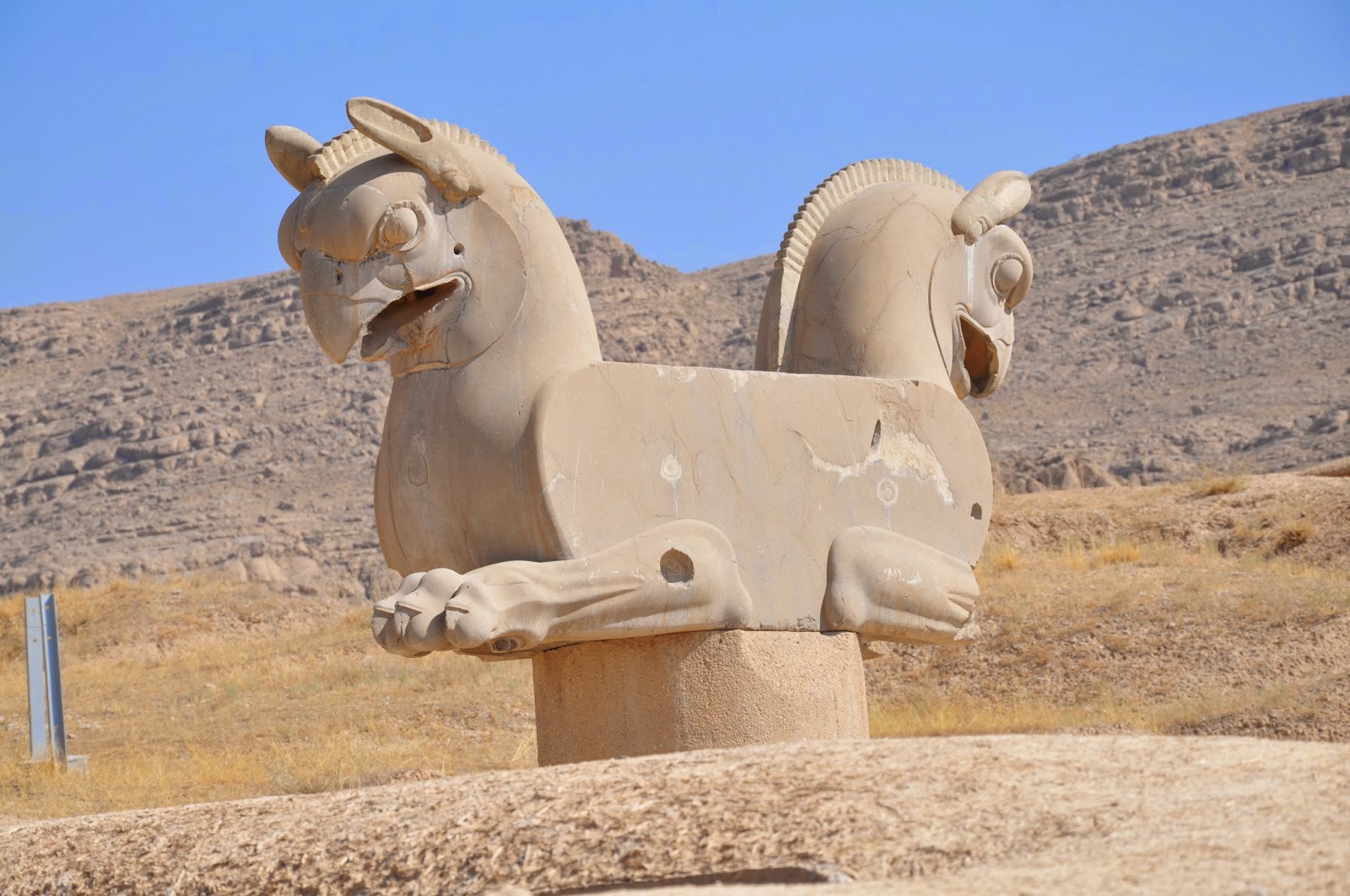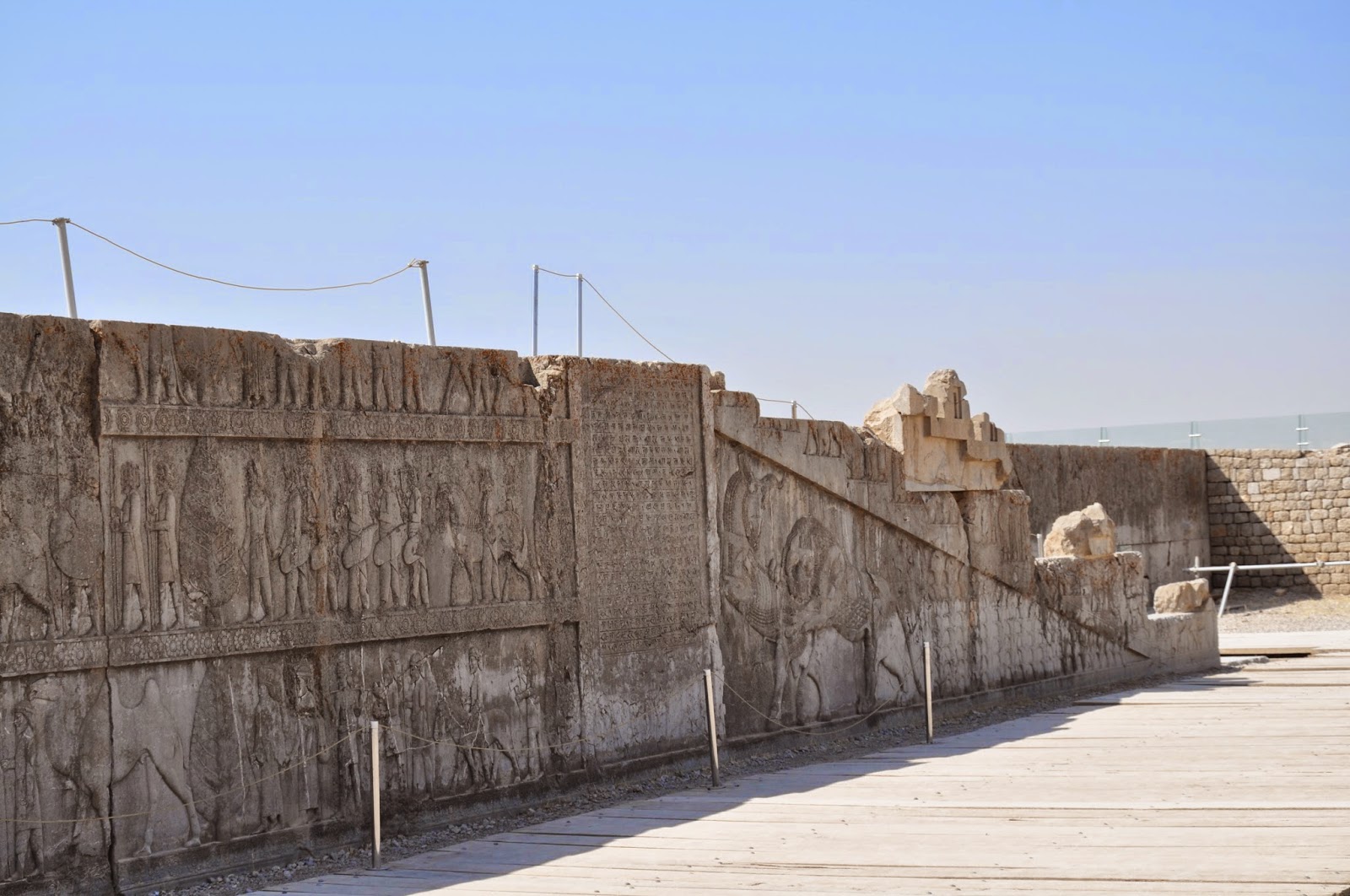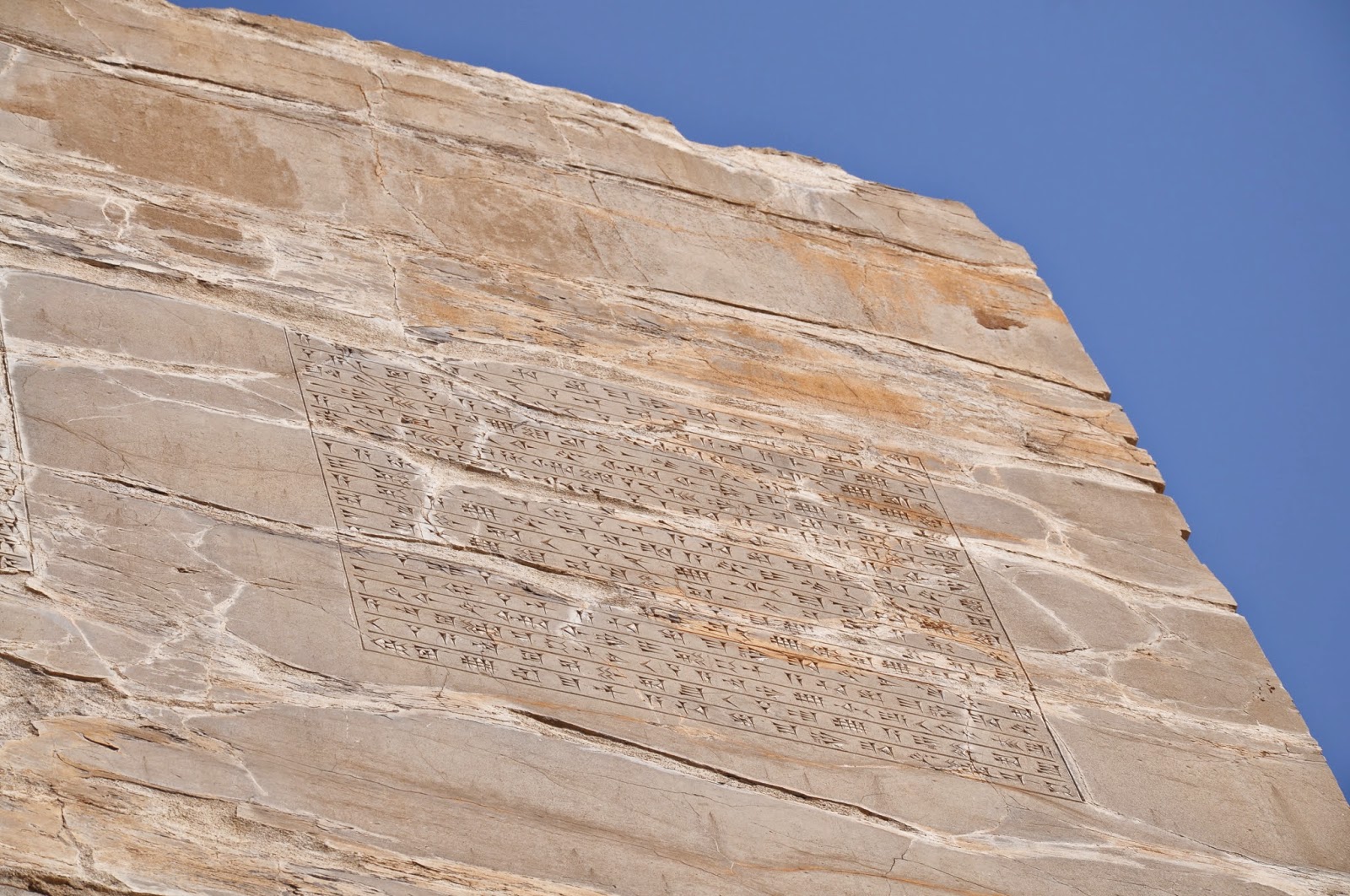(...)
We continued our visit onto the second gate and then slightly backwards onto the Northern Apadana staircase and further along onto the Eastern staircase.
Past the gate there are examples of bird-headed "push-me-pull you" addorsed animal capitals designed to carry ceiling crossbeams of Lebanese cedars (this homa bird is used as the current logo of IranAir).
The Apadana staircase has quite a few carved figures, with the Medes represented in their rounded caps and knee-length tunics and the Persians in their distinctive "Victoria sponge finger caps" and long pleated robes. They slowly ascend to the left side, chatting, carrying lotus buds, touching arms and holding hands.
To the far right there is the main Eastern Apadana staircase, which having been uncovered in 1932 is said to have (clearly has) the best preserved reliefs. The right hand section has lines of Medes and Persians representing the famous 10,000 immortals, the imperial bodyguards and attendants leading small horses, some with Elamite chariots or carrying rather intricate furniture or textiles.
To the left side, the panels depict envoys from 23 subject nations, some of which in very fine detail. Their identification depends on the clothing they are wearing, as well as the gifts they bear - people of the eastern regions, possibly called Carians with a bull; Arabs leading a dromedary camel, Ionians holding cloth and balls of yarn; people of Gandhara in Pakistan with a hump bull, Assyrians with sheep, etc.
It was almost impossible to photograph them all, but I wish I had been able to, because each one of them was special in his own particularity, with most of them (not to say all) being beautifully carved to the slightest detail.
On many of the reliefs one could see lions attacking bulls ( said to mean Leo ascendant over Taurus astrologically speaking, - the triumph of the New Year, the Nou Rouz), a recurrent motif which has also been interpreted as the victory of the King over any evil.
The fact that according to records the Achaemenid ruler received gifts on just two occasions (on the official imperial birthday and the annual scrifice of Mithra) seems to indicate what many have assumed as being a fact - Persepolis was used on the once a year celebration of Nou Rouz, the Spring Equinox.
(To be continued)
















































































